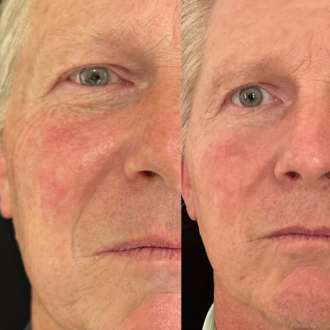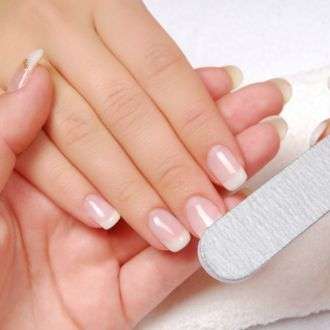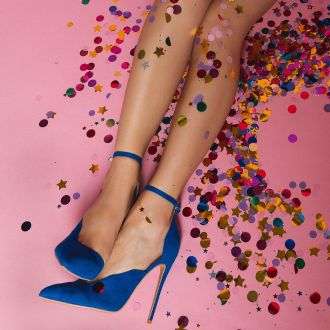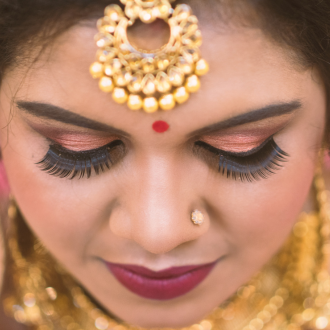
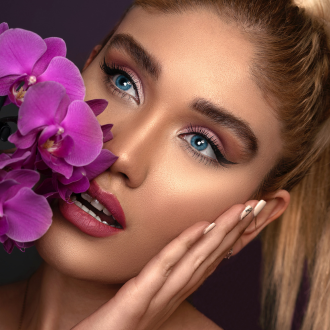

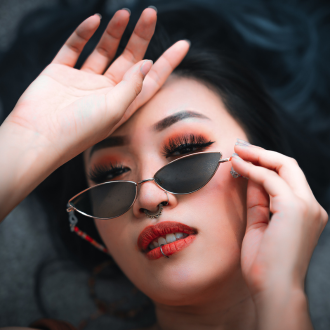
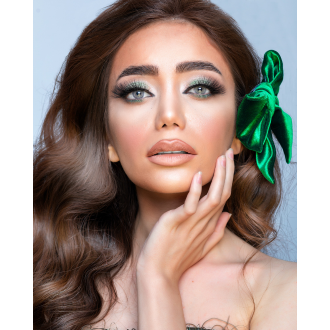
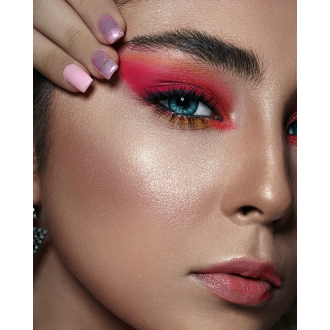
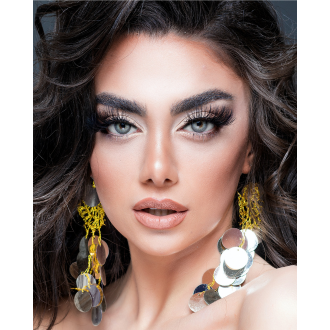
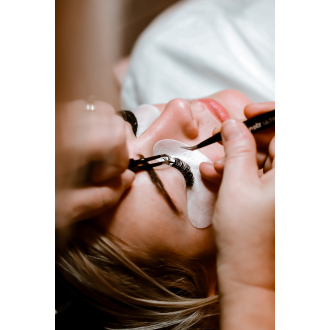
Lashes frame the face and accentuate the eyes so it's no surprise that, in recent years, lash extensions have risen to the top of the list of aesthetic procedures. What's more, extensions are individually adhered to your natural lashes (unlike strip lashes) which makes them much more customised and realistic-looking.
This season, however, heavy fake eyelashes will no longer be as fashionable, while gaining in popularity are shorter, subtle and more minimalistic lashes that blend in and are entirely natural-looking. Wispy, natural lashes tend to enhance your natural features, as they provide just the right amount of volume without drawing attention to the lashes themselves.
Single or classic lashes typically refer to one extension attached to one natural lash. As an alternative, a lash technician can add a few extension hairs to one natural lash to create a fan lash or volume lash if you prefer additional volume. They can even add a fan at exactly the spot where you want more volume, then taper it out with singles to create hybrid lash extensions.
We've already witnessed unique lash mapping this year, where a range of lengths, curls, and diameters are combined into a single style. Usually such textured extensions are made specifically for the person who requests a more distinctive and individualised look.
It's a common misconception that once these semi-permanent lashes are hand-glued on top of your natural lashes – that's it! While it's true that eyelash extensions require less maintenance than mascara or daily false eyelashes, they still require regular care which your professional lash technician will explain during application. It's good to let him or her help you to determine the size and length of your new lashes, especially the density, curl, and length of your extensions. This is because your correct choice of lashes will depend on your natural lashes, bone structure and face shape.
Strictly speaking, lash extensions generally last for up to eight weeks before falling out naturally, similar to your own lashes. The good news is that once they do begin to come out, you can have your lash technician reapply them so – in theory – you should be able to extend the life of your extensions almost indefinitely. If you are trying to strengthen your natural lashes in between treatments, lash serum is ideal.
In days gone by you would be strongly advised not to allow your eyelashes to get wet, but some modern adhesive formulations do permit water exposure after 24 hours. Before that, treat your eyelashes gently and avoid getting any water on them. When drying off, carefully dab the towel underneath your eyes to absorb any water.
As long as you keep your lash line protected, you should be able to use certain eye creams, though avoid oily products that can seep down into the lash line. Most importantly, avoid straining, pulling, or rubbing your new set of eyelashes, and also applying mascara, as this can cause them to become clumpy and difficult to clean. It can actually lead to friction, and the makeup remover breaking your extensions.
Because the lashes can become tangled while sleeping or showering, brush them gently with a clean spoolie brush (a small mascara wand-style brush) first thing in the morning, after you shower, and at the end of the day. As your lashes grow out above the lash line, the spoolie may become entangled and tug on your lashes, so only use the tip of it to separate the lashes to avoid pulling any out.
To remove eyelashes, simply apply a small amount of oil (such as castor or vitamin E) to your eyelashes, gently, and let it soak through the glue overnight. They should come off easily in the morning when you wash your face.
There is no hard evidence to suggest that eyelash extensions have a long-term impact on the length or health of your natural lashes. There is a very, very small chance of developing ‘traction alopecia’ where the continual weight of eyelash extensions might cause your natural lashes to fall out; but by and large, any long-term lash damage is more likely the result of years of improper application and care, or wearing extensions that are excessively longer or thicker than your natural lashes.
A word of advice – opt for a salon that uses butyl cyanoacrylate and octyl cyanoacrylate glues instead of formaldehyde, as the latter is a known eye irritant that can cause redness, irritation, and itchy swollen eyelids. Don't forget, too, that if you leave it longer between fill-ins, you'll end up needing to replace more lashes and it will cost more in the long run.
#eyelashextensions #eyelashes #eyelashtrends #aestheticprocedures #naturallooking #volume #semi-permanentlashes #falseeyelashes #lashserum #spooliebrush #mascara #tractionalopecia #application #aftercare #fillins #glue


